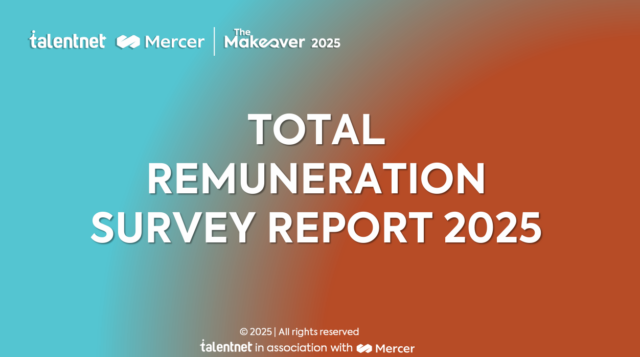Types of Employee Benefits: Mandatory and Supplemental Guide

Jan 22, 2025
Last updated on Nov 19, 2025
Beyond base salary, non-monetary benefits such as insurance, health check-ups, travel, training, and financial support—when strategically invested in—become powerful tools to attract and retain talent, enhance performance, optimize operational costs, and build a sustainable corporate culture. It is essential to distinguish between benefits and total rewards. Benefits are the supplementary, often indirect, components of compensation offered in addition to salary. Total rewards is a broader concept that encompasses salary, benefits, bonuses, and all other forms of monetary and non-monetary recognition that a company provides to its employees.

Employee benefits are a form of indirect remuneration, comprising various supplementary rights, allowances, and support—both tangible and intangible. They can include insurance, health screenings, vacation time, travel opportunities, tuition assistance, and lunch or transportation allowances, all designed to improve employees’ quality of life and create motivation at work. Benefits are categorized into two main types:
- Mandatory benefits: Those required by law (e.g., social insurance, health insurance, paid leave).
Voluntary benefits: Those designed by the company and offered flexibly (e.g., travel, additional periodic health check-ups, holiday bonuses).
1. Mandatory benefits in Vietnam
Mandatory benefits in Vietnam are the minimum entitlements that all businesses must provide to their employees in accordance with the law. These benefits include compulsory insurance schemes and other minimum rights as stipulated by current legislatio
1.1 Social insurance
Mandatory social insurance (SI) is the largest contribution in Vietnam’s employee benefits system, applying to both Vietnamese and foreign employees with labor contracts of one month or longer. From July 1, 2025, the mandatory social insurance contribution rate is 25% of the base salary for calculation, broken down as follows:
- The employer contributes 17.5%, allocated into 14% for the pension and survivorship fund,
- 3% for the sickness and maternity fund.
- 0.5% for the occupational accident and disease fund (where applicable).
- The employee contributes 8% to the pension and survivorship fund.
The salary used for SI contributions is capped at a maximum of 20 times the statutory base salary as defined by current law.
Mandatory SI benefits cover five key areas:
- Sickness: Provides an allowance during leave for personal illness or caring for a sick child under 7 years old, with benefits equal to 75% of the salary during the medically approved leave period.
- Maternity: Covers leave before and after childbirth (up to 6 months for female employees; 5-14 days for male employees caring for a newborn), with benefits equal to 100% of the average SI-contributory salary.
- Occupational Accidents and Diseases: Provides allowances for treatment, rehabilitation, and financial support in case of reduced working capacity due to a work-related accident or illness.
- Retirement (Pension): Entitles employees to a monthly pension upon reaching the statutory retirement age and completing the required contribution period.
- Survivorship: Provides a financial allowance to the employee’s relatives in the event of their death during the contribution or benefit period.
1.2 Health insurance
The national health insurance system requires precise contribution levels from both parties. Employers contribute 3% while employees add 1.5% of their monthly salary. This basic coverage ensures employees can access medical care through authorized facilities throughout Vietnam. The system covers essential medical examinations, both inpatient and outpatient treatments, and emergency medical services when needed.
1.3 Unemployment insurance
Unemployment insurance in Vietnam follows a straightforward structure with equal contributions from both sides. Employers and employees each contribute 1% toward this benefit, which applies to employment contracts exceeding three months. This modern system replaces traditional severance pay, providing employees with 60% of their average salary for up to 12 months during unemployment periods.
1.4 Paid leave
Vietnamese labor law mandates specific paid leave entitlements for employees. The standard annual leave allocation starts at 12 working days for employees in normal working conditions. Additional leave days apply based on years of service and specific working conditions.
Annual leave entitlements increase according to the following structure:
- One additional day for every five years of service
- 14 working days for employees in heavy, hazardous, or dangerous working conditions
- 16 working days for employees under 18 years of age
Public holidays and sick leave remain separate from annual leave entitlements. Maternity leave provides six months of paid leave for female employees, with specific provisions for male employees regarding paternity leave.
1.5 Periodic health check-ups
According to Article 21 of the 2015 Law on Occupational Safety and Health and Article 152 of the 2019 Labor Code, it is mandatory for all businesses with contracted employees to organize periodic health check-ups at least once a year for their entire workforce. These check-ups must include a general examination, ultrasound, laboratory tests, vision screening, and nutritional and psychological counseling. For employees in strenuous or hazardous roles or those in special categories (e.g., elderly employees, pregnant women), these health check-ups must be conducted at least twice a year.

Voluntary Supplemental benefits to attract modern talent
To create a sustainable competitive advantage, businesses need to build a diverse system of voluntary benefits that addresses the real needs of their employees while optimizing the overall cost of the benefits package for the company.
1. Financial benefits
Financial benefits continue to play a strategic role in attracting and retaining talent in the Vietnamese market in 2025, directly influencing an employee’s decision to commit to a company for the long term.
13th-month salary and performance bonuses
The 13th-month salary is a year-end bonus that, while not legally mandatory, is commonly stipulated in labor contracts or collective bargaining agreements. Employees who have worked for a full 12 months receive the entire amount, while those with shorter tenures are typically paid on a pro-rata basis. The value of the 13th-month salary is often calculated as the average monthly salary over the past 12 months or as a percentage based on the actual time worked during the year.
In addition, many modern businesses have developed more sophisticated performance bonus systems tied to project outcomes, business profitability, and the achievement of annual KPIs. Eligibility for these bonuses is often based on meeting sales targets or making outstanding contributions, turning compensation into a powerful tool for driving performance.
Practical allowances
From 2025, a lunch allowance of up to 730,000 VND (approx. 29.20 USD) per person per month will not be counted as personal taxable income. Businesses can provide this flexibly through on-site meals, meal vouchers, cash payments, or by contracting with a catering service, as long as the total cost complies with this regulation.
Transportation and parking allowances typically range from 150,000 to 500,000 VND (approx. 6 – 20 USD) per month and are particularly important for sales staff and employees who use personal vehicles or commute from distant areas. A phone allowance of a similar amount is often provided for roles requiring frequent communication, such as sales, department heads, and leadership. In some cases, companies may provide a work phone number or a fixed expense account.
The trend of offering housing and relocation allowances is growing rapidly among large enterprises to attract engineers and managers from other provinces, often provided as a cash package or direct support for rental costs.
Special occasion gifts
This type of reward remains an important way to show employee appreciation. Most Vietnamese companies provide gifts for Tet (Lunar New Year), birthdays, and the company’s anniversary. These can include cash bonuses, typically ranging from 200,000 to 1,500,000 VND (approx. 8 – 60 USD) per employee per occasion (with managers potentially receiving more), or physical gifts like Tet hampers, tech gadgets, or shopping vouchers. In 2025, many businesses are prioritizing useful tech gifts such as power banks and Bluetooth speakers, or experience-based vouchers for services or travel tours.
2. Physical and mental health benefits
Investing in employee health has become an essential form of “human resource insurance,” helping businesses maintain their competitive edge and build a reputable employer brand.
Comprehensive health insurance for employees and their families
Most large and medium-sized enterprises offer private health insurance plans from reputable providers such as PVI, Bao Viet, Liberty, MIC, and PJICO. Corporate plans typically include inpatient, outpatient, and accident coverage at a network of standard hospitals, with maximum annual payouts of up to 600 million – 1 billion VND (approx. 24,000 – 40,000 USD) per person for Gold or Platinum packages.
A critically important feature is the extension of these benefits to immediate family members (spouse and children), which demonstrates a deep level of care for the employee’s family. Some pioneering companies also offer additional support for employees’ parents or allow for family plan upgrades.
Mental health support
In 2025, many corporations in Vietnam are implementing Employee Assistance Programs (EAPs). These mental health programs offer confidential counseling sessions for employees and their families to handle emergencies, stress, depression, and other personal issues. “Mental wellness benefits” are a critical need, second only to financial benefits, especially for the Gen Z workforce and those in the technology sector.
Businesses often supplement EAPs by organizing workshops on stress management, meditation, and work-life balance skills. These programs have been shown to significantly increase employee satisfaction and engagement, reduce turnover rates, and boost productivity.
Support for physical activities
Subsidizing the cost of gym, yoga, swimming, or boxing memberships is a widespread trend, with companies often covering 50% to 100% of the training costs for official employees. Many companies have corporate partnership agreements with major fitness chains like California Fitness, Elite Fitness, and Fit24. At the same time, establishing internal sports clubs (for football, badminton, running) and organizing company-wide sports tournaments helps foster team spirit and promote holistic health.
3. Flexibility and work-life balance benefits
This category of benefits has become a standard in modern HR policy, especially for high-quality talent and the younger workforce in Vietnam.
Flexible work arrangements
The development of remote work policies is common in multinational corporations, technology groups, and financial services/fintech companies. These arrangements include:
- Fully remote work – allowing employees to work from home with full effectiveness.
- Hybrid work models – flexibly combining office-based and remote work.
- Flexible working hours – operating within a broad timeframe like 7 AM to 7 PM, as long as the required number of hours is met, instead of enforcing fixed start and end times.
Some businesses have formalized “remote work” as a committed clause in their labor contracts, specifying support for internet costs, equipment, and information security guidelines. The “flexitime” model, which allows employees to choose their start and end times within a set window (e.g., start between 7-9 AM, leave between 4-6 PM), is particularly well-suited for roles with high autonomy in a digitalized environment.

Expanded paid leave policies
While Vietnamese law mandates a minimum of 12 days of annual leave (14-16 days for special positions), many technology and multinational companies implement more generous policies, offering 15-18 days per year, plus additional leave based on seniority.
Leading companies also offer special paid days off for employees’ birthdays, family days, or Christmas—which are not legally required but are highly attractive to top talent. Some pioneering businesses have introduced a “mental health leave” policy, allowing employees to request time off without providing a detailed reason or to take paid leave specifically for their mental well-being.
4. Career development benefits
Although not legally required, this group of benefits has become a “survival strategy” that helps businesses develop their teams and retain top talent in a fiercely competitive landscape.
Training and capability development
Modern training programs often include sponsoring costs for external international or professional certifications, courses on digital platforms (like Coursera, Udemy, and LinkedIn Learning), internal e-learning systems, and “Blended Learning” models that integrate AR/VR technology into specialized skills training.
Leading companies typically allocate an individual training budget of 4 million to 20 million VND (approx. 160 – 800 USD) per employee per year for key or high-potential staff. This can also include scholarships for senior leadership development programs.
Building transparent career paths
A detailed career progression path for each level, with clear criteria and responsibilities for each position, is often developed through internal workshops, employee surveys, and linked to periodic performance reviews. Businesses that build a transparent career framework provide employees with clear direction, helping them understand the standards and competencies required to advance to higher positions.
A publicly accessible career path, available via an internal portal or performance management system, has become a standard practice in large corporations (multinationals, banks, retail, IT), fostering trust and long-term motivation among employees.
Mentorship and coaching programs
Today, these programs are implemented in various forms:
- Connecting new hires with senior employees or managers.
- Industry-specific group mentoring through regular talks and sessions.
- Group or individual career coaching.
- Professional coaching with 70-100% cost sponsorship for high-potential employees.
5. Culture and work environment benefits
This group of benefits acts as a strategic “magnet” for building a strong employer brand and maintaining long-term employee engagement.
Team engagement activities
Company trips, team-building events, charity work, year-end parties, and family days are typically organized once or twice a year on an increasingly large scale. These activities not only help build unity and reduce stress but also strengthen employees’ emotional connection and motivation.
Signature events like an “Internal Sports Day” or a “Corporate Culture Week” have become popular, as demonstrated by the success stories of companies like Saly Group, Plasma Vietnam, and TSC Service in 2025.
A positive and well-equipped work environment
This requires systematic investment in both the physical space and the organizational culture. Companies are focusing on designing open-plan offices, modern pantries, and entertainment and relaxation zones with green spaces and creative areas to foster an inspiring and safe work environment. Investing in modern equipment, smart meeting rooms, and common areas that support work-life balance has become a basic standard.
Equally important is the cultivation of a positive leadership culture through employee engagement surveys, “open door” policies, internal mentorship, a proactive feedback culture, and the promotion of diversity and inclusion.
Recognition and rewards programs
This form of recognition is becoming increasingly structured, with policies for acknowledgment and rewards based on principles of transparency and fairness. Recognizing monthly, quarterly, or annual excellence with a combination of financial bonuses, physical gifts, consumer vouchers, or trips/event tickets is a dominant trend.
Awards are organized at scales ranging from the team to the company level, adhering to transparent regulations as stipulated in Decision 51/2010/QĐ-TTg and new decrees on rewards management in 2025. The award selection process must ensure transparency, objectivity, and fairness on a voluntary basis and in compliance with internal rules, helping to build trust and a transparent work environment.
A strategic employee benefits framework serves as a fundamental tool for talent acquisition and retention in Vietnam’s competitive labor market. Organizations must balance mandatory requirements with supplementary benefits that address evolving workforce expectations. From essential social insurance provisions to professional development opportunities and workplace culture enhancements, each benefit component plays a specific role in creating an attractive employment package.
By structuring these various benefits effectively, organizations position themselves as employers of choice in Vietnam. Talentnet’s benefit scheme design & review service provides expertise in developing compliant and competitive benefits strategies aligned with market standards.

Solve your HR problems!
6th Floor, Star Building, 33 Mac Dinh Chi, Saigon Ward, Ho Chi Minh city, Vietnam




